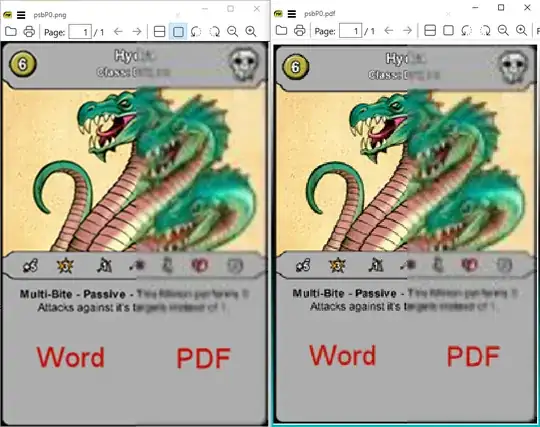edit: the jpeg image said it was 118 dpi vert and horiz. I set the "CustomScreenDPI = 118" in the properties pad and saved and no difference was observed. I tried going through compatibility settings (I have windows 8.1) and no difference. Tried running as admin and all that, no difference. tried just using 1 monitor and consolidating settings for that, no difference.
I was trying to get a comic viewer working with multi-page vertical page scrolling (i.e. where you can read vertically without page jumps), sumatrapdf was the only recommendation found across the threads seeking this feature.
However I noticed the output was noticeably blurrier than what was seen through other programs. Notably below is a zoomed in section displayed in both windows photo viewer and sumatrapdf. The file in suma is a .cbz, and windows photo viewer is displaying the extracted .cbz (jpg images in this case). Seen below, the image one in suma is really quite blurred compared to windows photo viewer.
Now I did open the jpeg that windows photo viewer was specifically looking at to see if it was a weird thing to do with formats or too many pages displayed in suma or whatever, but there was no change (i.e. was still blurry in suma) even when comparing a single jpg in suma vs a single jpg in windows photo viewer.
I would like to know if I can get rid of the blur and bring the display up to that of what's seen in windows photo viewer. Short of that, I'd want to know what's causing this difference.
I looked through the settings, but didn't really see anything about setting the quality of the display in suma. If there is one I missed though, let me know so I can try it.

